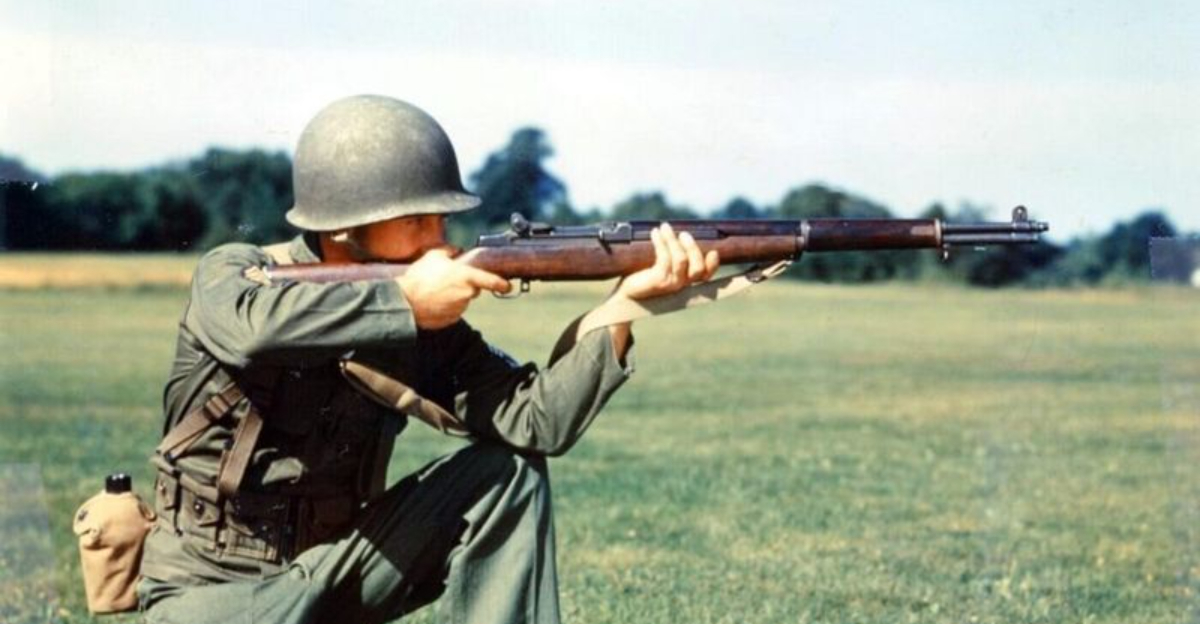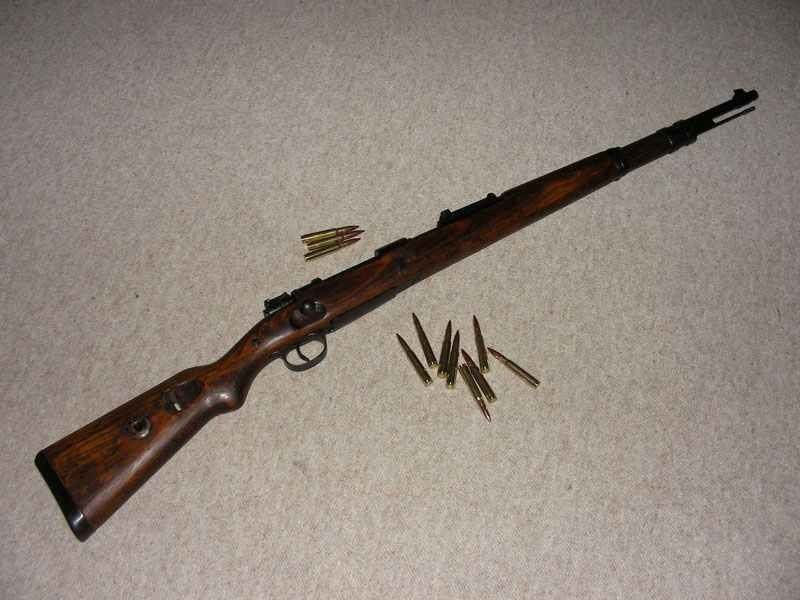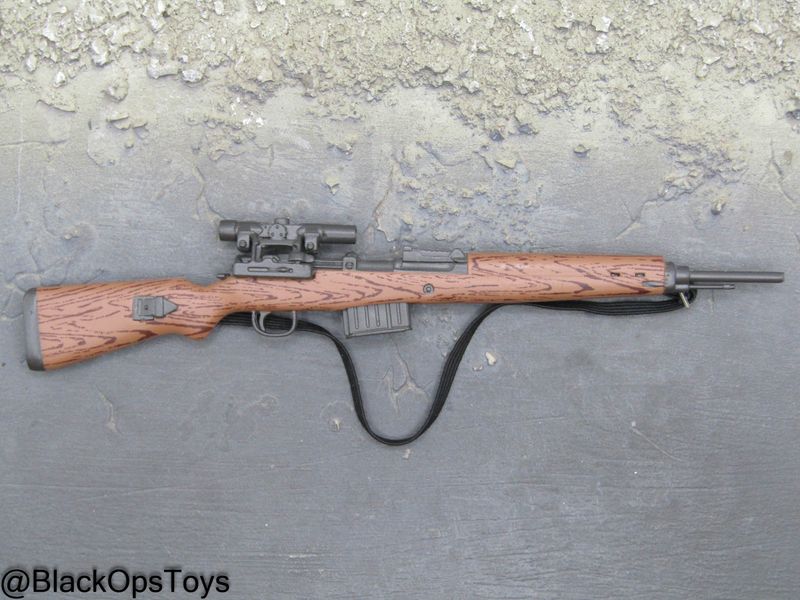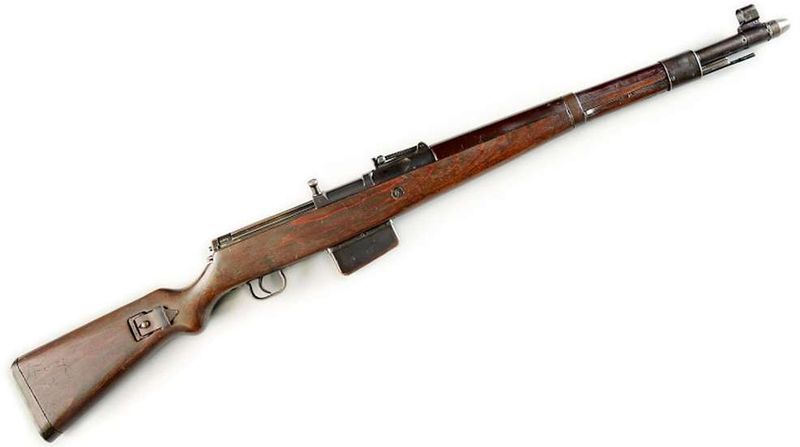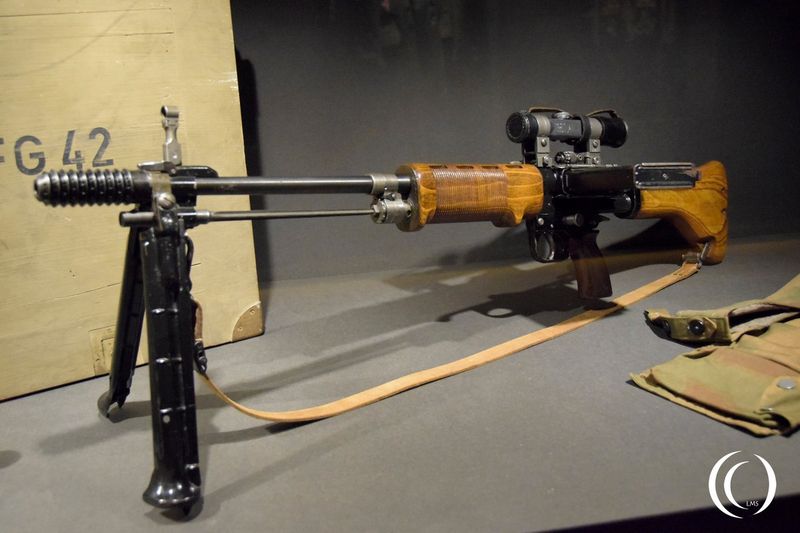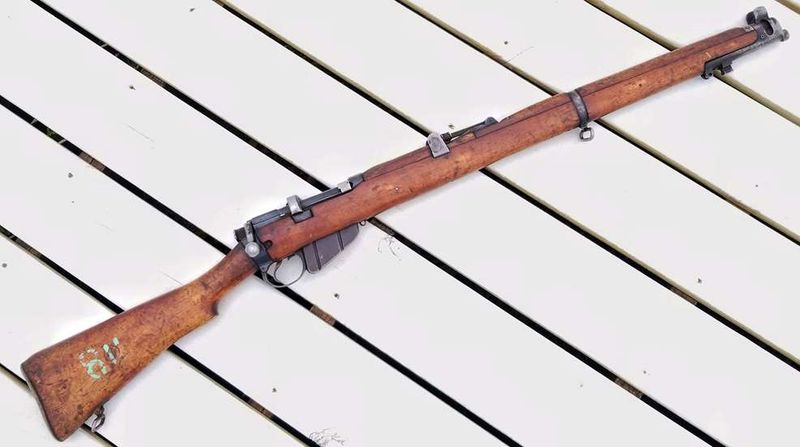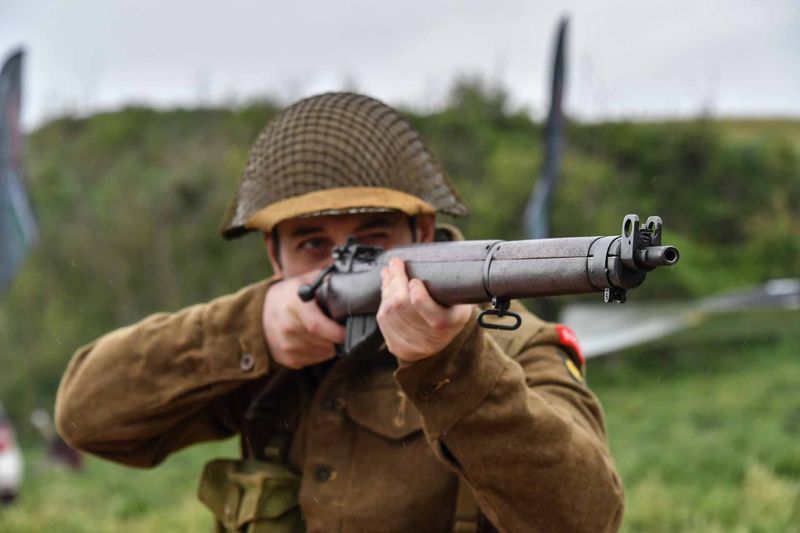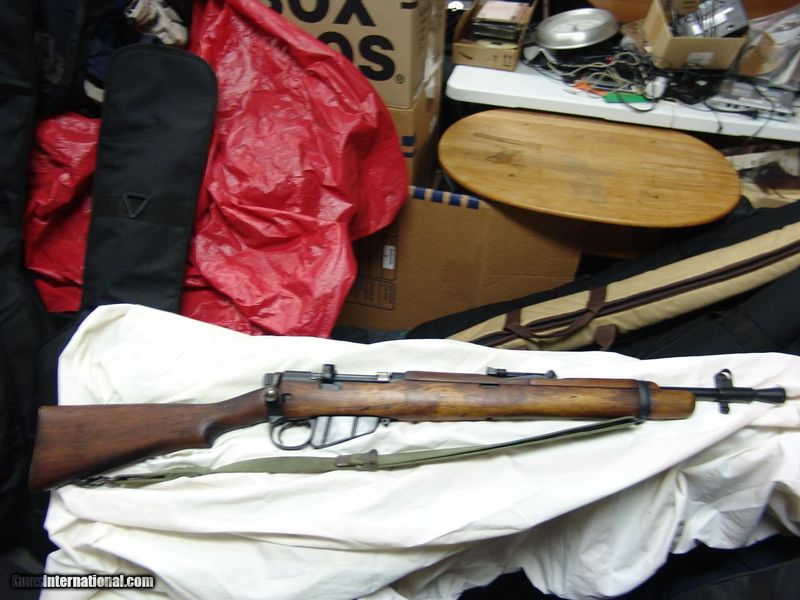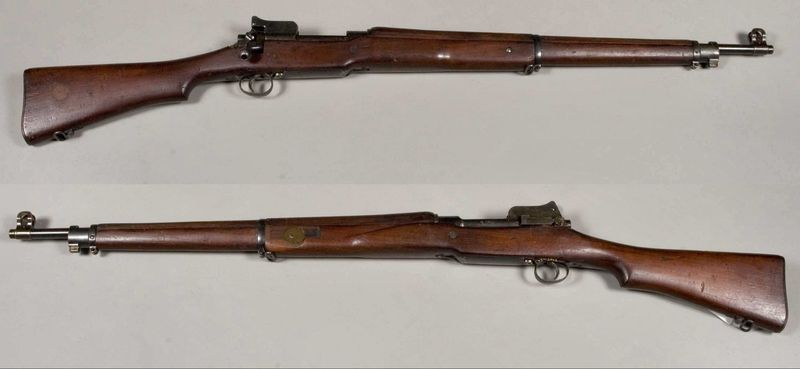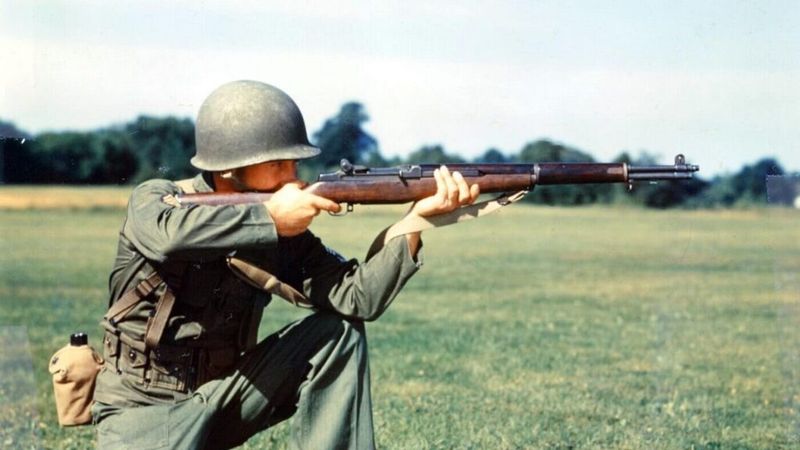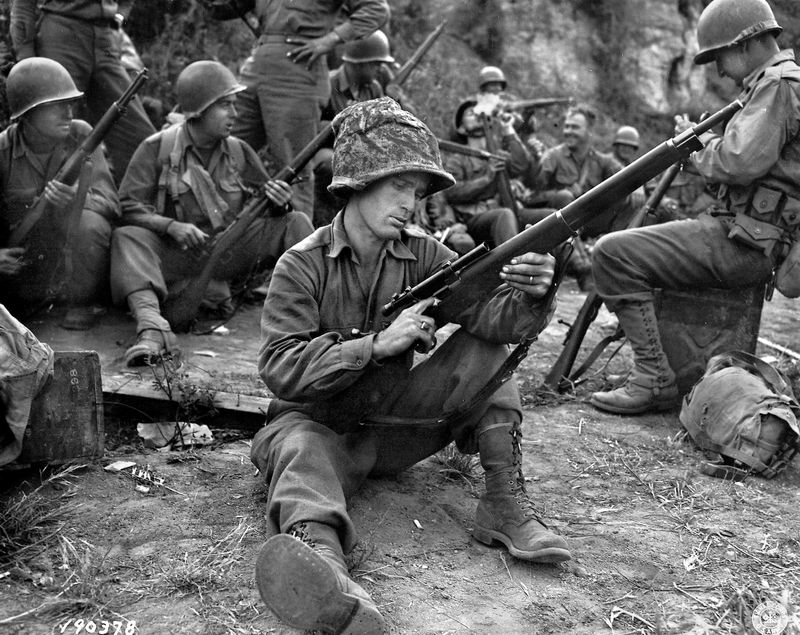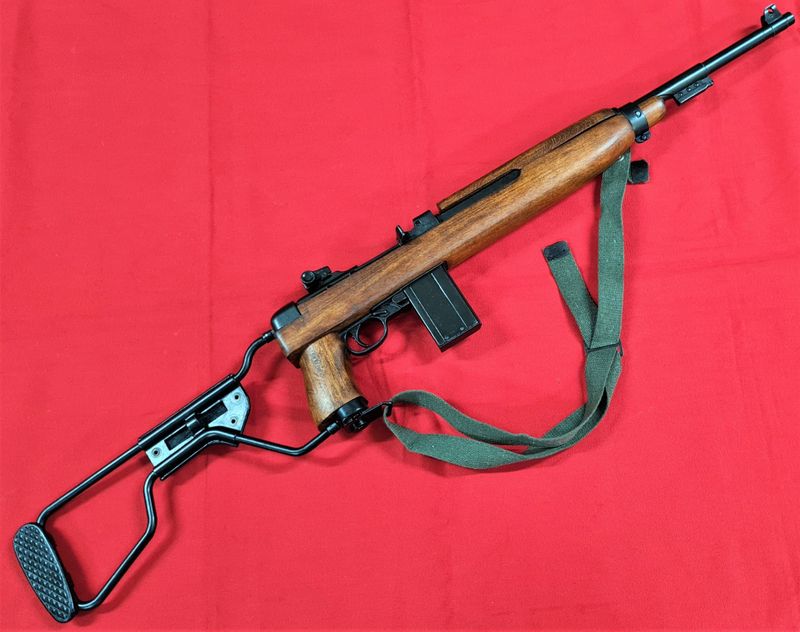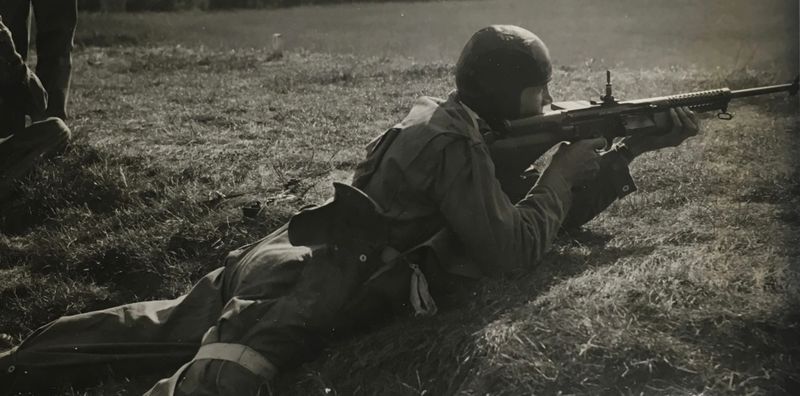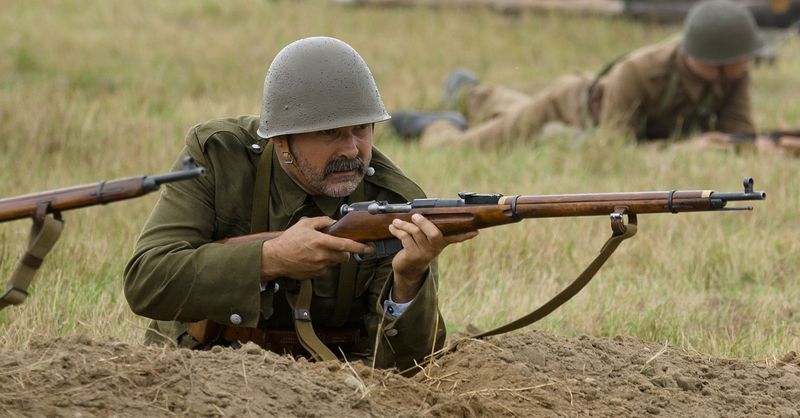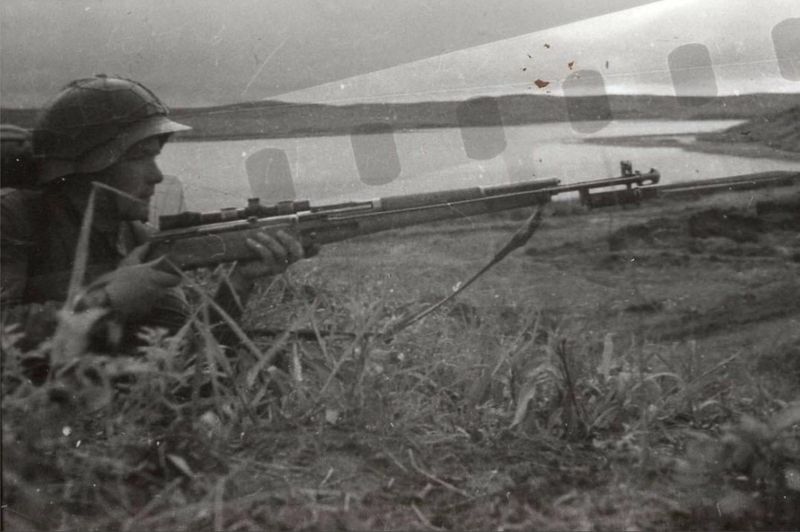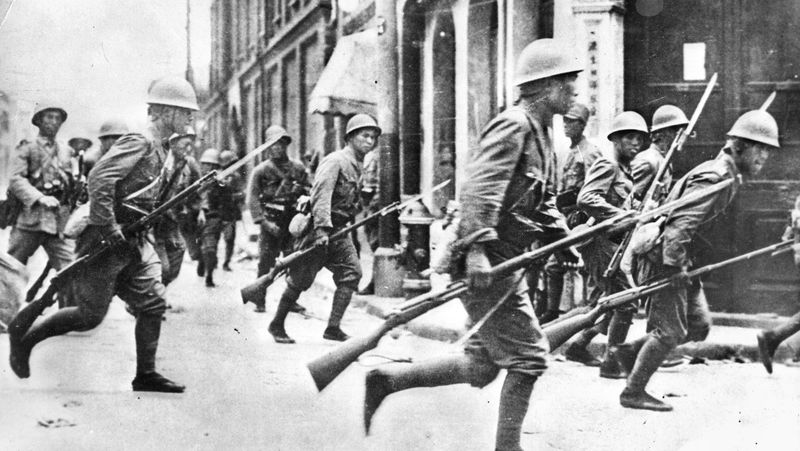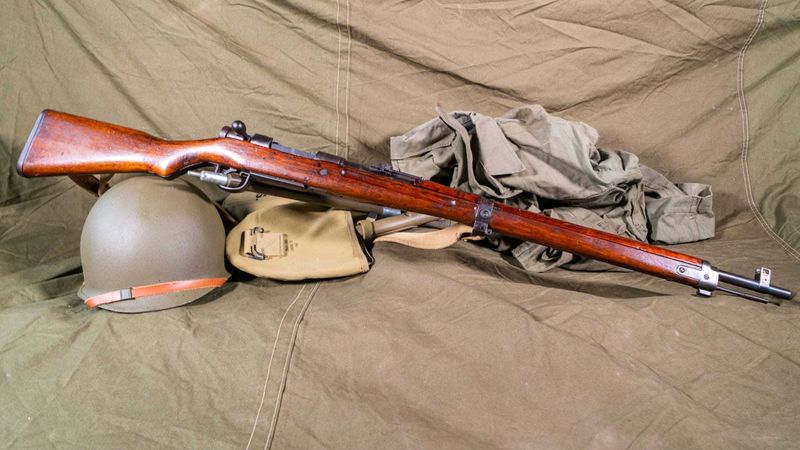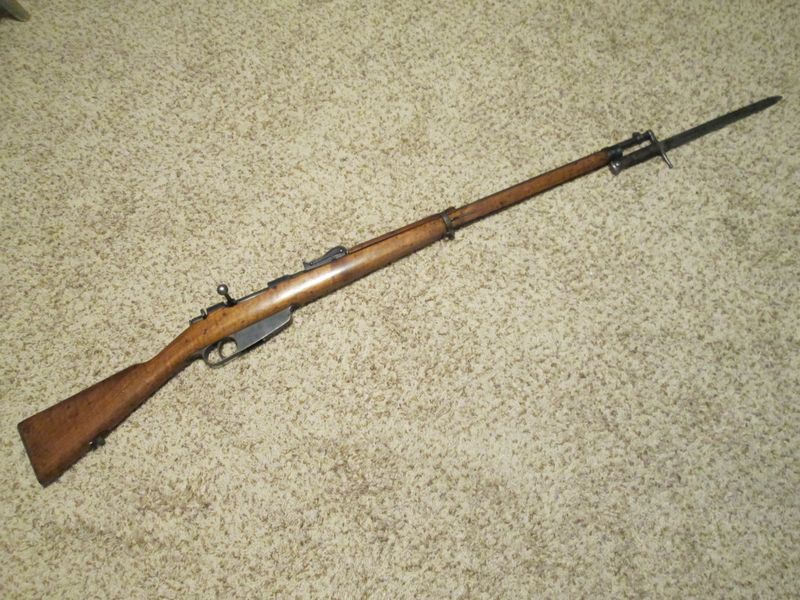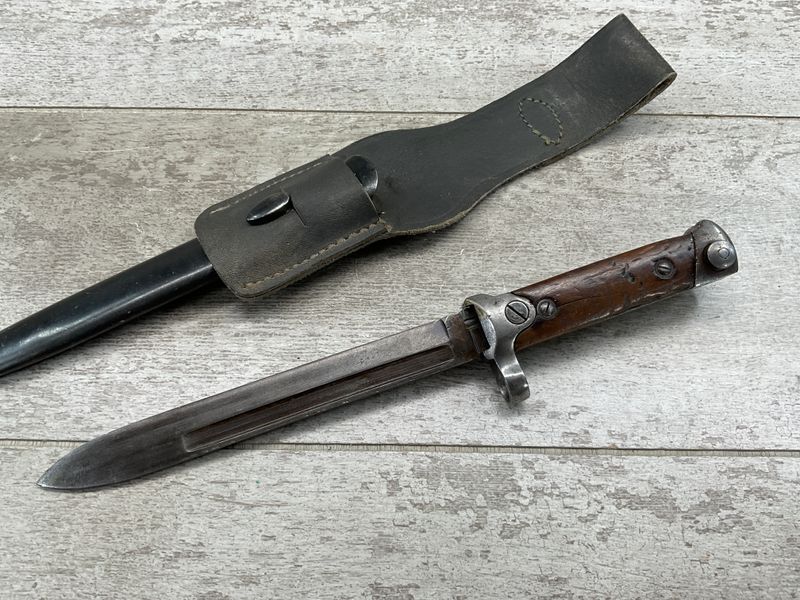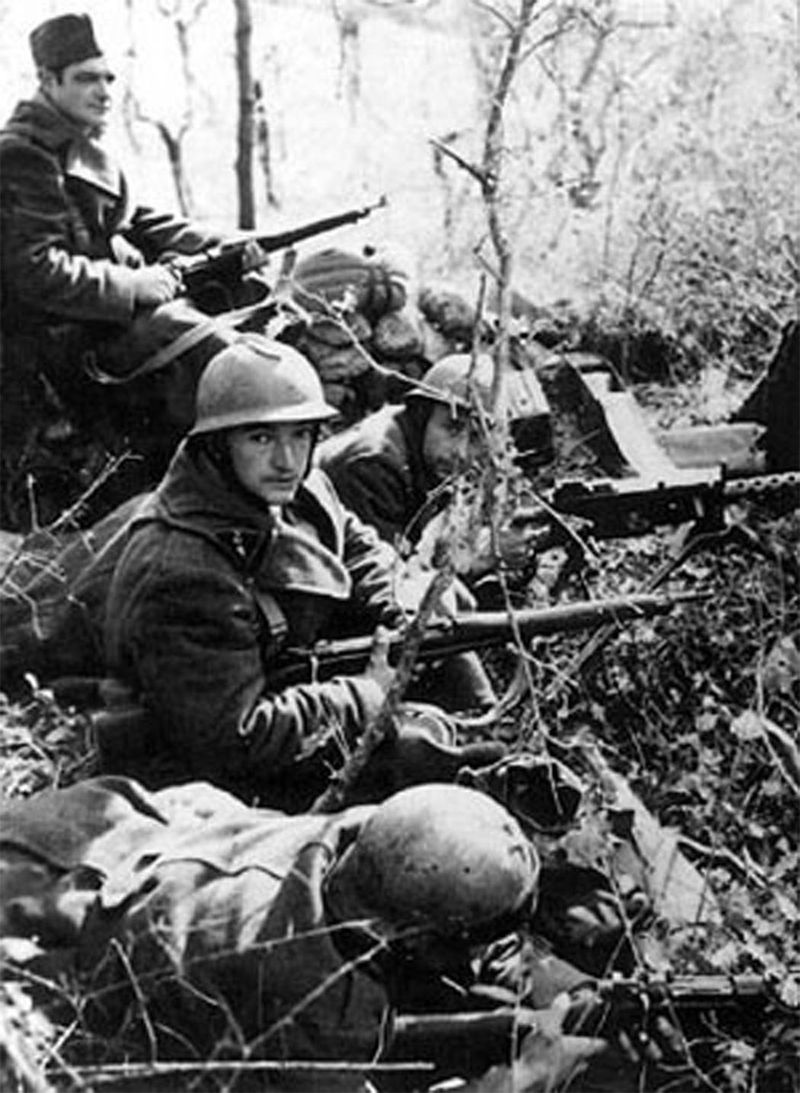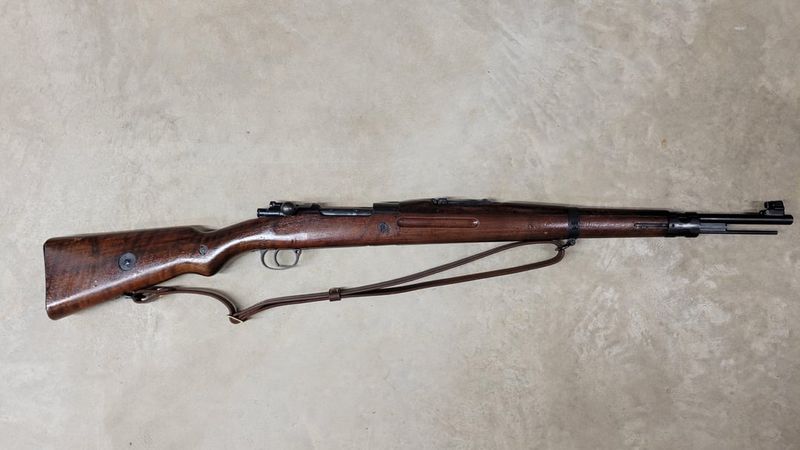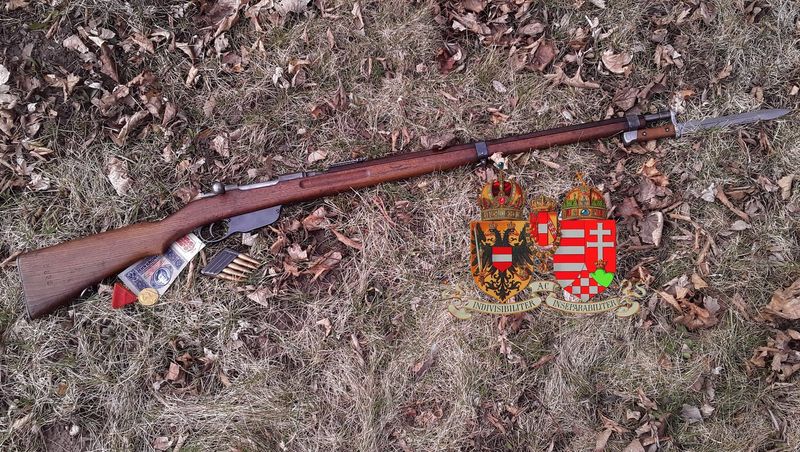During World War II, firearms technology reached new heights as nations equipped millions of soldiers with rifles that would define modern combat. These weapons weren’t just tools—they became extensions of the soldiers who carried them across beaches, mountains, deserts, and cities. From reliable workhorses to experimental designs, the rifles of WWII tell stories of innovation, desperation, and the changing face of warfare that shaped our modern world.
1. Karabiner 98k (Germany)
Nicknamed ‘the German workhorse,’ this bolt-action rifle formed the backbone of Wehrmacht infantry forces throughout the war. Soldiers appreciated its exceptional accuracy up to 800 meters and robust construction that withstood battlefield abuse.
The rifle’s Mauser action set the standard for reliability, while its five-round internal magazine created a distinctive loading process using stripper clips. German snipers particularly valued the weapon for its consistent performance.
Despite being outclassed by semi-automatic rifles later in the war, the Karabiner 98k remained in production until 1945, with over 14 million manufactured. Many captured examples were repurposed by Allied forces who respected its dependable engineering.
2. Gewehr 43 (Germany)
Born from battlefield necessity, the Gewehr 43 answered German infantry’s desperate need for faster-firing weapons on the Eastern Front. Engineers created this semi-automatic rifle to match Soviet firepower while maintaining German precision.
Featuring a 10-round detachable magazine, soldiers could maintain sustained fire without the slow reloading process that plagued bolt-actions. The gas-operated system allowed the rifle to harness propellant gases to cycle the action automatically.
Production challenges and material shortages meant only about 400,000 were made. Late-war examples often showed declining quality as Germany’s industrial capacity crumbled, yet the G43 remains a fascinating example of warfare driving technological advancement under extreme pressure.
3. Gewehr 41 (W and M variants) (Germany)
German ordnance officials demanded these rifles operate without gas ports drilled into the barrel—a strange requirement that doomed both designs from the start. The competing Walther and Mauser models used complex gas trap systems that quickly fouled with carbon buildup.
Soldiers dreaded the G41’s reliability issues in harsh Russian winters, where the intricate mechanisms froze or jammed with alarming frequency. The Walther version proved marginally more successful, with about 40,000 produced compared to just 6,700 Mauser variants.
Most fascinating was the rifles’ muzzle cup system that captured gas after the bullet exited—an ingenious but ultimately flawed solution. These early semi-automatics represent Germany’s first stumbling steps toward modern infantry weapons.
4. FG 42 (Germany)
Paratroopers demanded a weapon combining machine gun firepower with rifle accuracy—the revolutionary FG 42 answered their call. Hermann Göring personally championed this select-fire marvel that could switch between semi-automatic precision and full-auto suppression fire with a simple selector switch.
Its side-mounted magazine kept the rifle’s profile low when firing from prone positions during airborne operations. Engineers packed remarkable innovations into the design, including a quick-change barrel and integrated bipod for sustained fire support.
With fewer than 7,000 produced, these rifles rarely reached frontline troops outside elite Fallschirmjäger units. Modern assault rifles like the M16 and AK-47 owe their fundamental operating principles to this groundbreaking design that was decades ahead of its time.
5. Lee-Enfield No. 1 Mk III “SMLE” (UK & Commonwealth)
Veterans called it the fastest bolt-action in the war, with trained soldiers achieving the legendary “mad minute”—15 aimed shots in 60 seconds. The Short Magazine Lee-Enfield’s cock-on-closing action and 10-round magazine gave Commonwealth troops a decisive firepower advantage in countless engagements.
Manufactured since 1907, these rifles had already proven themselves in World War I before serving throughout WWII. Their robust design tolerated desert sand, jungle humidity, and Arctic cold equally well.
British armorers appreciated the rifle’s simple maintenance requirements, while soldiers trusted their lives to its legendary reliability. The distinctive brass disc on the stock butt recorded the rifle’s accuracy testing results—a unique quality control feature no other nation’s service rifle employed.
6. Lee-Enfield No. 4 Mk I (UK & Commonwealth)
Wartime manufacturing demands birthed this streamlined evolution of Britain’s trusted rifle. Engineers eliminated unnecessary machining steps while strengthening the action to handle the stresses of combat and mass production.
The No. 4’s most noticeable improvement was its aperture rear sight, allowing faster target acquisition than the older SMLE’s open notch system. Soldiers particularly appreciated this feature during the chaotic house-to-house fighting of Northwest Europe in 1944-45.
Factories across the Empire, including Canada’s Long Branch arsenal, produced these rifles in staggering numbers. The No. 4 represented British pragmatism at its finest—taking an already excellent design and making it cheaper to produce without compromising the qualities that made the Lee-Enfield the empire’s trusted defender for generations.
7. Lee-Enfield Jungle Carbine (UK & Commonwealth)
Flash hiders weren’t just accessories on this specialized carbine—they were necessities. The shortened barrel created blinding muzzle flash in low-light jungle conditions, revealing the shooter’s position to Japanese forces.
British designers carved away excess wood and metal to create this lightweight variant specifically for Burma and Pacific campaigns. The resulting weight reduction made long jungle patrols less exhausting, but created an unfortunate side effect: the infamous “wandering zero” where accuracy would gradually deteriorate.
A distinctive rubber buttpad helped tame the increased recoil from firing full-power .303 cartridges through the shortened barrel. Despite its flaws, Commonwealth troops fighting in dense vegetation appreciated the Jungle Carbine’s compact dimensions and familiar Lee-Enfield handling characteristics during some of the war’s most brutal close-quarters combat.
8. Pattern 1914 Enfield / M1917 Enfield (UK & USA)
American factories originally built these rifles for British troops during WWI, creating an unexpected transatlantic hybrid. When America entered WWII with rifle shortages, these stockpiled weapons became crucial stopgaps until M1 Garand production increased.
Marine Raiders carried these rifles during early Pacific campaigns, appreciating their accuracy and robust construction. The rifle’s distinctive rear peep sight provided excellent precision, making it a preferred sniper platform for both British and American marksmen.
Over two million were manufactured in American factories, making it more common in US service than the iconic Springfield during WWI. Though officially replaced by the M1 Garand, these rifles continued serving throughout WWII with second-line American units and resistance forces supplied by Allied airdrops across occupied Europe.
9. M1 Garand (USA)
The distinctive “ping” of its ejected en-bloc clip became the soundtrack of American advances across two theaters of war. As the world’s first standard-issue semi-automatic rifle, the M1 Garand gave US troops a tremendous firepower advantage over Axis forces armed primarily with bolt-actions.
Designer John Garand created an engineering marvel that functioned reliably in Pacific jungles and European winters alike. The gas-operated system harnessed propellant gases to cycle the action, allowing soldiers to maintain aimed fire without breaking their shooting position.
Over 5.4 million were produced during the war years. The eight-round capacity might seem limited by modern standards, but the speed of reloading with pre-loaded clips and the ability to fire those rounds rapidly made the Garand a revolutionary combat weapon that helped secure Allied victory.
10. M1903 Springfield (USA)
Marine Corps snipers clung to these bolt-action rifles long after their units received newer M1 Garands. The Springfield’s exceptional accuracy and robust Mauser-derived action made it the preferred platform for precision shooting throughout the war.
Manufactured since 1903, the rifle had already established its reputation for reliability in WWI before returning to the battlefields of WWII. Many National Guard and early-war units carried Springfields during the desperate early Pacific campaigns before sufficient Garands became available.
The rifle’s five-round internal magazine loaded quickly with stripper clips, while its cock-on-opening bolt provided a smooth, reliable action even in adverse conditions. For many Americans who trained with these rifles before the war, the Springfield represented the familiar precision tool they trusted with their lives during combat’s chaos.
11. M1 Carbine (USA)
Weighing just over five pounds, this lightweight semi-automatic became the constant companion of officers, vehicle crews, and paratroopers who needed more firepower than a pistol but couldn’t manage a full-sized rifle. Its handy dimensions made it perfect for confined spaces like tank interiors or aircraft cockpits.
The innovative .30 Carbine cartridge split the difference between pistol and rifle power, offering effective performance to 300 yards. Later war versions featured folding stocks and 30-round magazines for paratroopers and special operations forces.
Over six million were produced—more than any other American small arm of the war. Despite criticism about stopping power against determined Japanese charges in the Pacific, the M1 Carbine’s reliability and handling characteristics made it beloved by troops who appreciated its light weight during exhausting combat operations.
12. M1941 Johnson Rifle (USA)
Marine Raiders and paratroopers fought to get their hands on these rare semi-automatics that offered unique advantages over the standard Garand. Designer Melvin Johnson created an innovative recoil-operated system that cycled more smoothly than gas-operated alternatives.
The rifle’s 10-round rotary magazine could be topped off mid-firefight—something impossible with the Garand’s en-bloc clip system. This feature proved invaluable during extended jungle patrols where ammunition conservation was critical.
Only about 30,000 were manufactured as the War Department favored standardization around the Garand. Dutch forces ordered these rifles shortly before falling to German occupation, with many examples eventually finding their way to resistance fighters and special operations units throughout the Pacific and European theaters.
13. Mosin–Nagant M91/30 (USSR)
Soviet factories churned out these rifles by the millions, arming the largest land army in history with rugged, no-frills firepower. The distinctive long barrel and socket bayonet became symbols of Russian resistance against Nazi invasion.
Women snipers like Lyudmila Pavlichenko used the accurized PU-scoped variants to devastating effect, accumulating hundreds of confirmed kills. The rifle’s simple but robust design withstood the brutal Eastern Front conditions where more complex weapons often failed.
The distinctive straight bolt handle and rimmed cartridge might have seemed outdated compared to newer designs, but Soviet doctrine emphasized reliability above all else. For millions of Soviet citizens hastily trained and sent to the front, this rifle represented both their only means of survival and their instrument of vengeance against an invader who threatened their very existence.
14. SVT-38 & SVT-40 (USSR)
German troops eagerly collected these semi-automatic rifles whenever they could capture them, recognizing their superior firepower compared to standard bolt-actions. Designer Fedor Tokarev created these gas-operated rifles to modernize Soviet infantry tactics before the German invasion.
The chrome-lined barrel provided exceptional corrosion resistance and sustained accuracy during prolonged combat—a feature lacking in German designs. Early production SVT-38s suffered from fragile parts, but the improved SVT-40 corrected most issues while reducing manufacturing complexity.
Stalin’s purges of military leadership disrupted production plans for these advanced rifles. Though intended to completely replace the Mosin-Nagant, wartime exigencies forced a return to the simpler bolt-action as primary armament. Approximately 1.6 million were produced, with many finding their way into Finnish hands during the Winter War.
15. AVS-36 (USSR)
Red Army troops received this ambitious select-fire battle rifle just as Stalin’s purges decimated Soviet military leadership. Capable of both semi-automatic and fully automatic fire, the AVS-36 represented Soviet determination to equip infantry with modern firepower.
The rifle’s complex mechanism proved extremely sensitive to dirt and extreme temperatures. Soldiers fighting in Finland’s Winter War discovered its tragic flaw—the intricate parts froze solid in subzero conditions, often rendering the weapon useless when needed most.
Production ceased after only about 65,000 examples, making surviving specimens extremely rare. The rifle’s distinctive muzzle brake helped tame the powerful 7.62×54mmR cartridge during automatic fire, but couldn’t overcome its fundamental reliability issues. This early experiment nevertheless provided valuable lessons that influenced later Soviet weapons development.
16. Arisaka Type 38 (Japan)
Jungle warfare revealed this rifle’s greatest strength—an action so robust it withstood tropical conditions that rendered other weapons useless. Japanese soldiers relied on the Type 38’s exceptional durability during island campaigns where maintenance opportunities were scarce.
The 6.5mm cartridge produced minimal recoil, allowing smaller-statured soldiers to maintain accurate fire. However, its relatively low stopping power led to the development of larger-caliber alternatives later in the war.
Most fascinating was the rifle’s chrome-lined barrel—a feature Western powers wouldn’t adopt until after the war. The Emperor’s chrysanthemum seal adorned each receiver, and many surrendered rifles had this mark defaced to avoid surrendering the Emperor’s symbolic property. Many captured examples were brought home by American troops as war trophies.
17. Arisaka Type 99 (Japan)
Aircraft identification was built right into this rifle’s sighting system. The unique anti-aircraft folding sights allowed Japanese soldiers to lead flying targets—an optimistic feature that reflected Japan’s early war defensive concerns.
Engineers designed the Type 99 around a more powerful 7.7mm cartridge to increase stopping power against charging enemies. The stronger action handled higher pressures flawlessly, while maintaining the legendary durability of Japanese service rifles.
Late-war examples showed dramatic quality deterioration as Japan’s resources dwindled. Wooden stocks gave way to rough substitutes, while metal parts went unfinished. The desperate “last ditch” variants lacked even basic safety features, reflecting Japan’s collapsing industrial capacity in 1945. Collectors categorize these rifles by their manufacturing timeframe, with early-war examples commanding premium prices.
18. Carcano M1891 (Italy)
Clip loading revolutionized military rifles, and this Italian design was among the first to perfect the system. The distinctive en-bloc clip completely inserted into the magazine—a feature later adopted by the American M1 Garand.
Italian alpine troops appreciated the rifle’s relatively light weight during mountain campaigns. The 6.5mm cartridge generated minimal recoil while maintaining adequate stopping power for its era.
The rifle gained unfortunate notoriety decades after WWII when a surplus Carcano variant was used to assassinate President Kennedy. During the war itself, Italian troops often found themselves outgunned by Allied forces with semi-automatic weapons. Thousands were captured and repurposed by resistance fighters after Italy’s surrender in 1943, creating the strange scenario of the same rifle being used by both sides in the Italian campaign.
19. Carcano M1938 (Italy)
Mountain warfare demanded specialized equipment, and this compact carbine answered Italian alpine troops’ calls for a lighter weapon. The shortened barrel and modified stock created a handy package for soldiers navigating rugged terrain.
Engineering challenges plagued the 7.35mm cartridge transition, as Italy attempted to standardize around a more powerful round. Logistical realities forced a return to the original 6.5mm caliber as the war progressed, creating supply complications for frontline units.
The distinctive folding bayonet remained attached to the rifle at all times—a unique approach that eliminated the problem of lost bayonets but added permanent weight to the muzzle. After Italy’s 1943 surrender, German forces seized large numbers of these carbines to arm second-line units guarding the Atlantic Wall and occupation forces throughout Europe.
20. MAS-36 (France & Free French Forces)
French soldiers carried these distinctive rifles from the deserts of North Africa to the final push into Germany. Adopted just before WWII, the MAS-36 featured an unusually short bolt handle and a unique reversed bayonet that stored with the point facing backward.
After France’s 1940 defeat, many rifles were hidden from German occupation forces. These cached weapons later armed resistance fighters during liberation operations. Free French forces fighting alongside Allied armies continued using these rifles throughout the war.
The rifle’s most unusual feature was its lack of a dedicated safety mechanism—soldiers were trained to carry it with an empty chamber. Manufacturing continued secretly in small numbers during German occupation, with subtle markings indicating resistance-bound weapons. The design proved so robust that it remained France’s standard rifle well into the 1960s.
21. vz. 24 (Czechoslovakia/German Wehrmacht)
Czech craftsmanship made these Mauser-pattern rifles some of the finest bolt-actions ever produced. Before the war, Czechoslovakia exported these weapons worldwide, creating an ironic situation where German troops sometimes faced opponents armed with Czech-made rifles.
After occupying Czechoslovakia in 1939, German forces acquired large stockpiles of these high-quality weapons. The distinctive lion crest on the receiver was often replaced with German eagles after capture.
Romanian, Hungarian, and Bulgarian troops fighting alongside Germany on the Eastern Front frequently carried these rifles. The smooth action and excellent machining made them prized possessions among Wehrmacht soldiers accustomed to rougher late-war German production. In an interesting historical footnote, many found their way to Israel after the war, arming the fledgling state during its 1948 War of Independence.
22. Mannlicher M1895 (Austria-Hungary/German Waffen-SS)
Straight-pull actions allowed for astonishingly fast follow-up shots with this distinctive rifle. The unique bolt system moved straight backward instead of requiring rotation, giving trained users a rate of fire approaching early semi-automatics.
Originally designed for the Austro-Hungarian Empire during WWI, thousands of these rifles found new life in WWII. Waffen-SS units and German-allied forces from former Austro-Hungarian territories frequently carried these weapons when newer arms were unavailable.
The rifle’s unusual en-bloc clip ejected automatically from the bottom of the magazine when empty, creating a distinctive sound that experienced soldiers recognized instantly. Late in the war, desperate German forces issued these rifles to Volkssturm militia units defending the Reich’s collapsing borders, creating the strange sight of elderly men carrying rifles older than themselves into battle against Soviet tanks.
